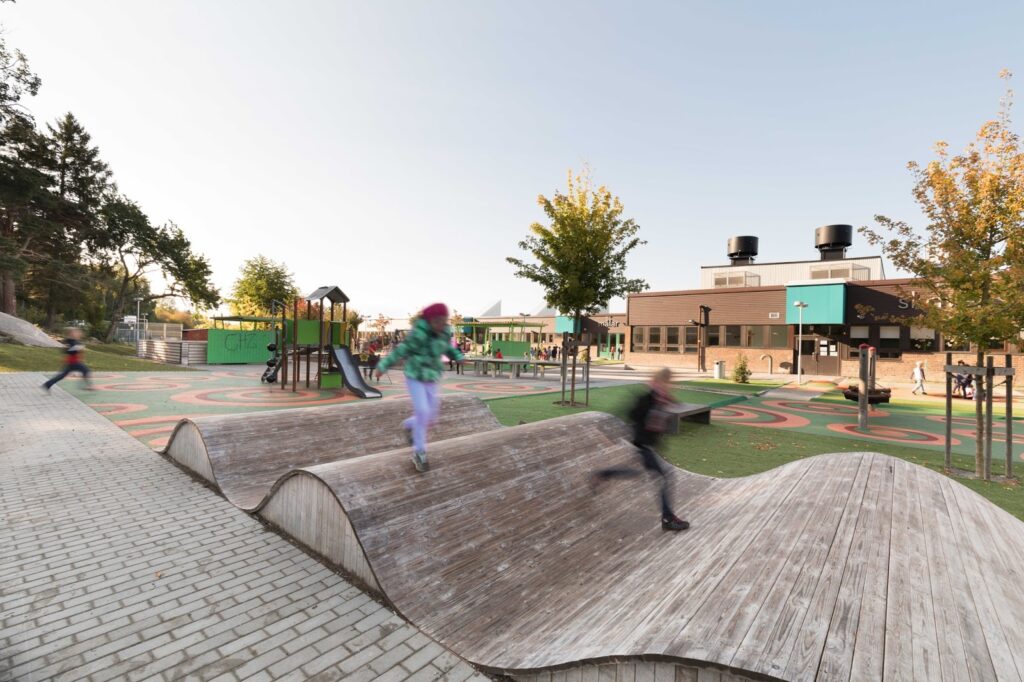The current status of the coliving market
Coliving is a form of residential shared living in which third party service providers rent living spaces that allow residents to live communally and conveniently while sharing space and resources. The coliving sector is one of the fastest growing sectors in the private rental sector and is gaining a lot of attention from investors, planning authorities and real estate firms around the world. With real estate industry leaders such as JLL and Knight Frank showing interest and producing annual (sometimes even bi-annual) reports on the subject, investment into the coliving sector is expected to increase more than any other residential living asset. Seen as an innovation in the housing sector, this raises an important question: can coliving maximize social, environmental and economic impact as well as being profitable?
As a relatively new industry, it is hard to analyze the financial success of coliving developers and operators as of yet, however, certain projects are receiving large investments (some projections saying the value of this asset class will grow up to £50 billion by 2020) and have expansion plans with thousands of units under development in the next half decade. What’s more, is that the average occupancy rate of coliving spaces is above 87% (and some even having steady occupancy rates of over 97%) and conversions from traditional residential into coliving can lead to above-market net operating income (NOI) yields leading to NOI percentage increases of up to 12%. Even if it is still too early to see the big picture in financial terms, coliving is becoming a prominent niche asset class in residential real estate.
As an industry that touts itself as an affordable option to sustainable communal living, coliving ventures have yet to prove their social and environmental impact. There is a risk that if coliving projects focus solely on global expansion and scalability over impact they will contribute to societal issues such as gentrification, segregation, displacement, ‘community/impact-washing’, perpetuating the trend of loneliness and increasing the percentage of unaffordable homes in our urban areas.
Coliving’s emphasis on facilitating a sense of community creates an extension of the traditional responsibilities of building operators. In coliving spaces, operators are not only creating physical infrastructures for living, they must also create physical and social frameworks in which relationships can flourish. Without this, there is a risk that residents will stay predominantly in their private space, rather than taking advantage of what should be large and well-equipped shared spaces. Some operators have risen to this challenge, using strategies such as thoughtful curation of applicants, effective community integration when onboarding new residents, a varied events programme and effective feedback loops. However, other operators have not engaged in these practices, and it seems that there are a growing number who simply use ‘coliving’ as a byword for rented flatshares.
As a coliving consultancy, we at Conscious Coliving believe in the coliving sector’s potential to integrate human-centered approaches that put connection at the heart of their business: connection to self, connection to others and connection to nature. Our Conscious Coliving Manifesto provides a framework that helps coliving developers and operators integrate environmental sustainability, wellbeing and community at the core of their product. The social, environmental and economic impact – also known as social value – of coliving projects can be significant if these aspects are at the core of what they do.
Embedding social value into coliving business strategies
There are many ways to maximize social value in residential real estate projects, especially in coliving spaces. First, coliving operators and developers can integrate social value into their projects by analyzing how their investments lead to certain outcomes for their communities and neighborhoods throughout the development cycle. For example, in this report from 2018, the UK Green Building Council has outlined how new developments can ensure social value outcomes such as jobs and economic growth, health and wellbeing of residents and the strength of their communities through specific deliverables. By integrating these deliverables into concrete corporate strategies and business metrics, coliving operators and developers can be measuring their impact and shaping their products based on these analyses.
Second, specific design features and operational strategies need to be taken into consideration in order to maximize these public benefits in coliving projects. For example, some researchers argue that the maximum size a community needs for authentic connection and maintaining relationships is 150 individuals (in contrast, there is a current trend of projects in the sector that are developing for sites of 500+ units). Research also shows the need for more biophilic design in order to improve human health, well-being, and productivity in our homes and workplaces.
Third, coliving operators can also train their community facilitators in conflict management, nonviolent communication and experience design, amongst other facilitation skills, in order to provide a safe and engaging community experience for their residents. For example, organizations such as PURE offer community facilitation programs for coliving spaces wanting to strengthen their experience. Lastly, by using IoT solutions such as Kndrd, Yorlet or SALTO KS, coliving operators can streamline operational tasks in order to put more investment into community teams and social impact and sustainability programs.
Social value in coliving: some case study examples
When looking at existing coliving models, there are aspects of social value sprinkled throughout the sector. As a sector that is still emerging, it may be too early to tell if those aspects are being integrated as core strategies amongst different coliving models or if they are just ‘nice to haves’. For example, owner-operator models such as The Collective and Quarters do incorporate environmental sustainability features into their buildings (as required by planning authorities). However, the question is if they are going above and beyond certifications such as LEED, WELL and BREEAM in order to design for the wellbeing and ultimately flourishing of their communities?
One model that promotes an integrated approach to impact is Israel-based Venn, which has locations in Tel Aviv, Berlin and Brooklyn. They released an impact report earlier this year and have acquired funding from impact investors, in order to provide ‘Neighborhood as Service (NAS)’, a platform that contributes positively to neighborhood economics and dynamics. This wider placemaking or ‘neighboring’ approach as Venn co-founder Or Bokboza calls it focuses on its impact on local communities, rather than just on its internal membership. Although they are measuring their impact through wellbeing assessments that include member and neighborhood levels of perceived loneliness, it is hard to anticipate if this kind of coliving model really is a ‘gentler way to gentrify’.
The list goes on for coliving projects that implement aspects of social value into their business models: rural coliving spaces Coconat, Mokrin House and Sende have strong ties with their local neighborhoods and act as neighborhood hubs for economic and cultural development; Treehouse in LA, Cohabs in Belgium and The Assemblage in NYC use biophilic design and recycled materials for their spaces; IKEA’s innovation lab, Space10, is developing a project for modular and affordable coliving villages that use sustainable materials and offer alternative ownership models to residents; and even large scale projects such as Starcity are concerned with urban revival, integration with the local neighborhood and designing sustainably for the long-term.
What else is needed for coliving to thrive?
As invested observers and participants of the coliving sector, we trust these coliving players to develop in a way that is beneficial for the communities that dwell in their spaces, and not just for their bottom line. We believe that integrated social value strategies are needed for coliving projects to do so. Customer satisfaction scores (such as net promoter scores, or NPS), occupancy levels and retention rates are great ways to understand if there is a demand for coliving products, continued brand loyalty and business success. We also think that coliving projects can integrate wellbeing measurements and social return on investment (SROI) into their quarterly reviews and Key Performance Indicators (KPIs). By measuring the human flourishing of coliving communities with tools such as the European Social Survey or the Warwick-Edinburgh Mental Wellbeing Scales and making SROI a key success indicator (with social value calculators such as HACT and SoPact), coliving projects can remain accountable to their most important stakeholders: the individuals in the communities living within and around their spaces.
As an emerging market the coliving sector has a huge potential to foster individual and collective actualization, therefore reshaping how we live and thrive in urban and rural communities. Coliving providers can be at the forefront of sustainable mixed-use placemaking that allows for intergenerational and affordable communal living. However, in a real estate industry that focuses on maximizing shareholder profit and securing high occupancy rates, coliving projects seem to be concentrating more on acquiring 10,000+ units before 2025 than ensuring a high quality of life and wellbeing for their communities. With more accountability through impact metrics and human centered design approaches coliving providers have the opportunity to reimagine the way our societies live in the 21st century. Coliving projects must continue to go above and beyond real estate industry standards to measure their impact and provide truly innovative shared living spaces for the thriving of their communities and neighborhoods. Coliving developers and operators have the opportunity and responsibility to do so, and set new industry standards that integrate connection, community, wellbeing and sustainability into the core of what they do.









